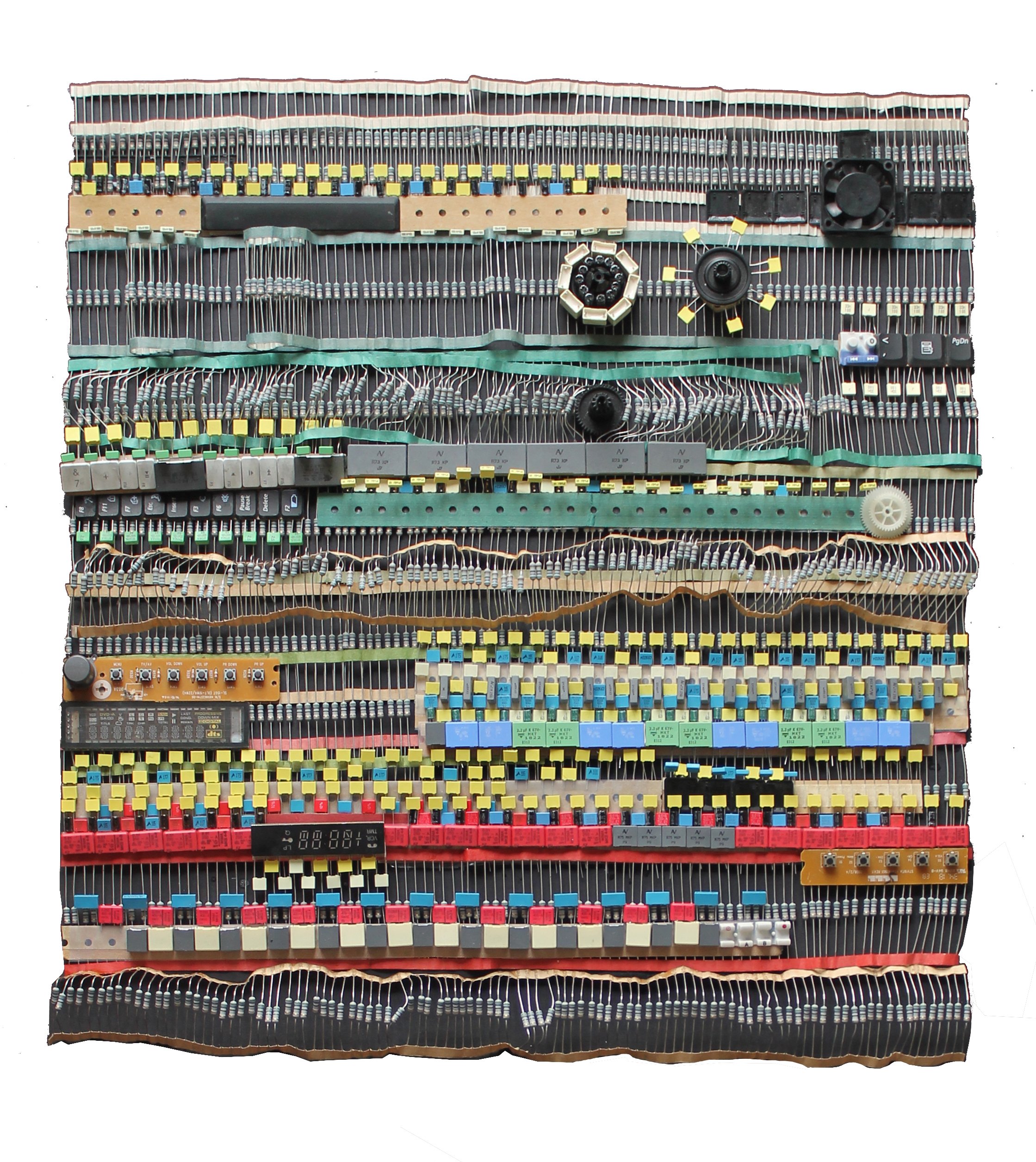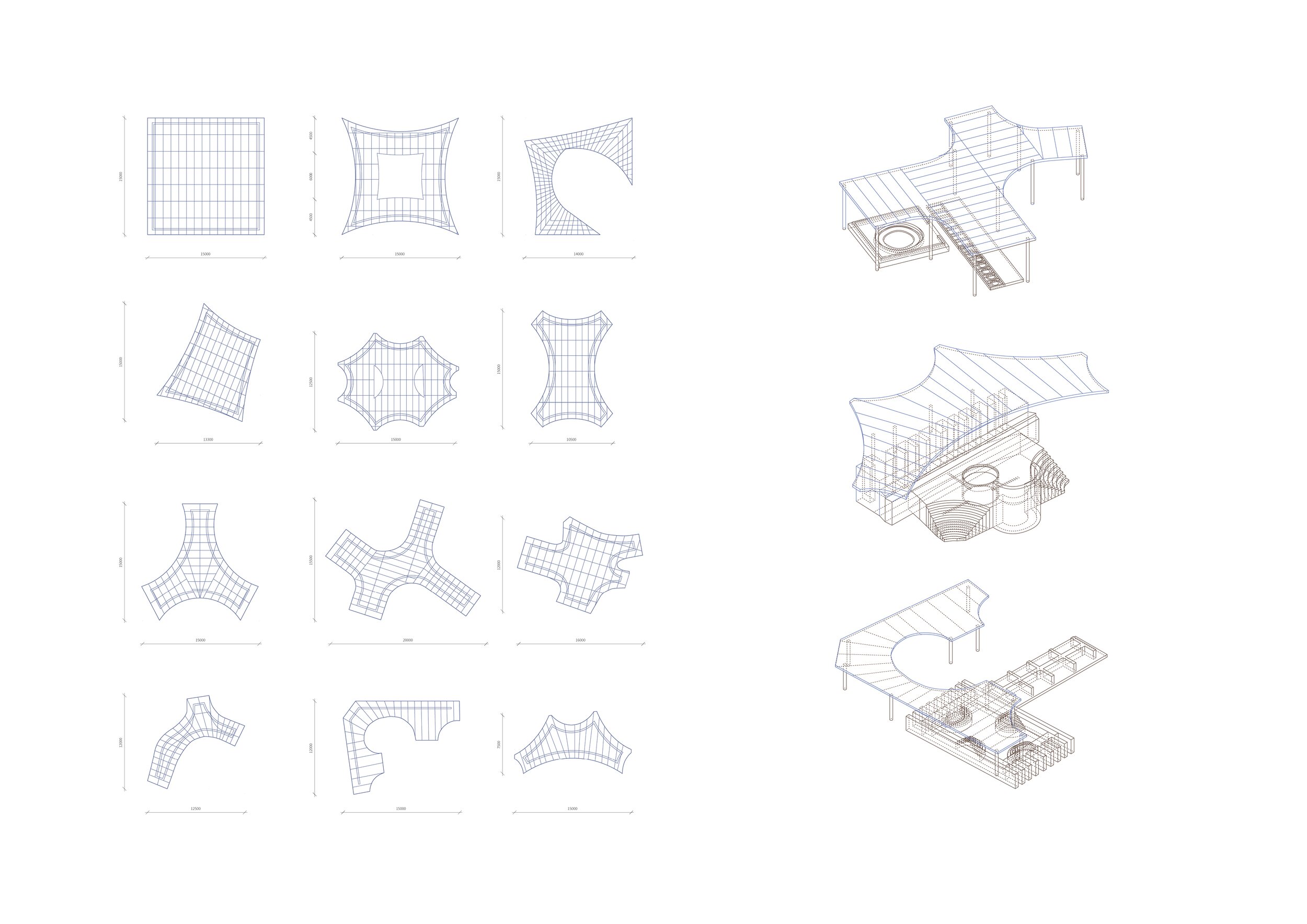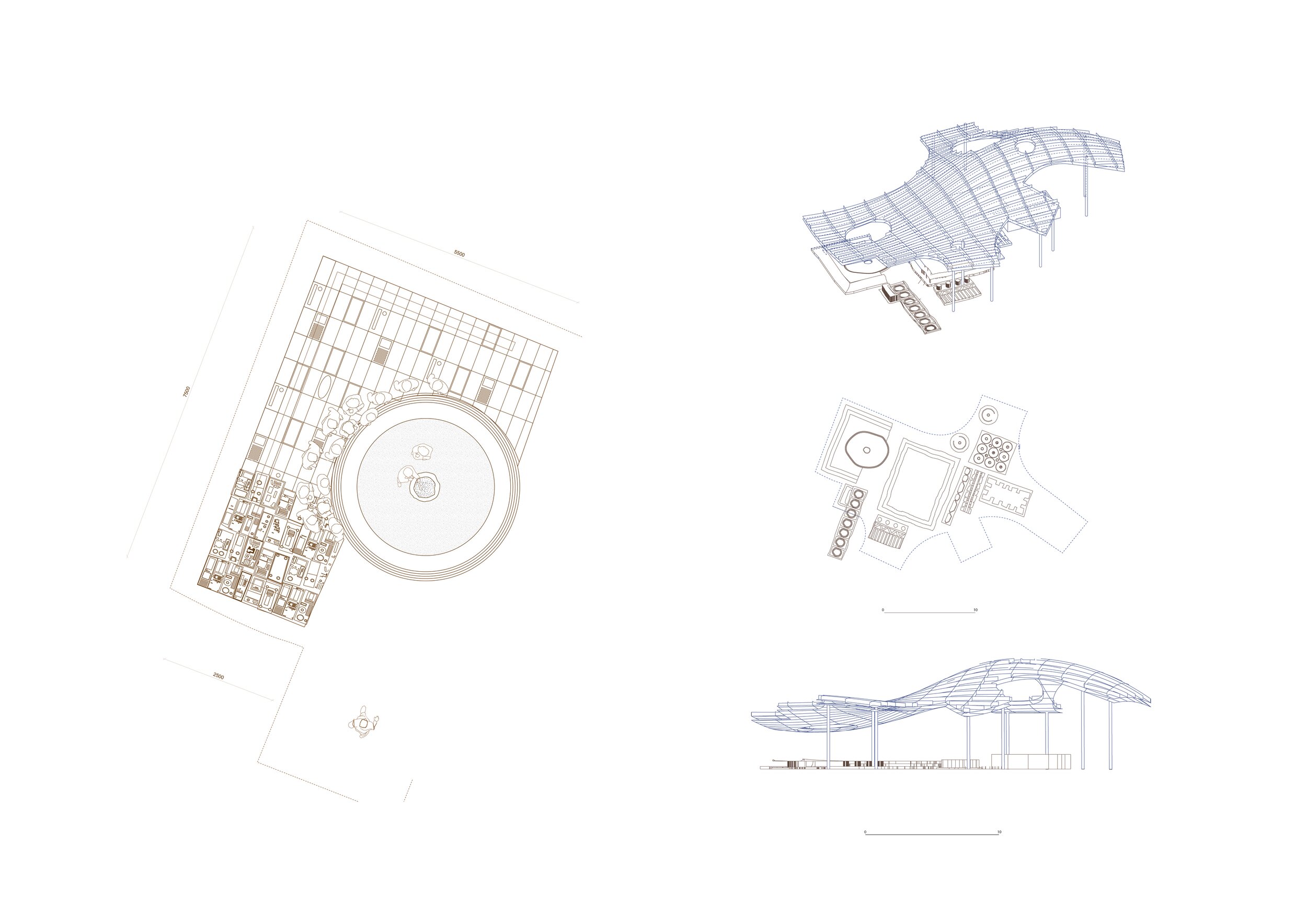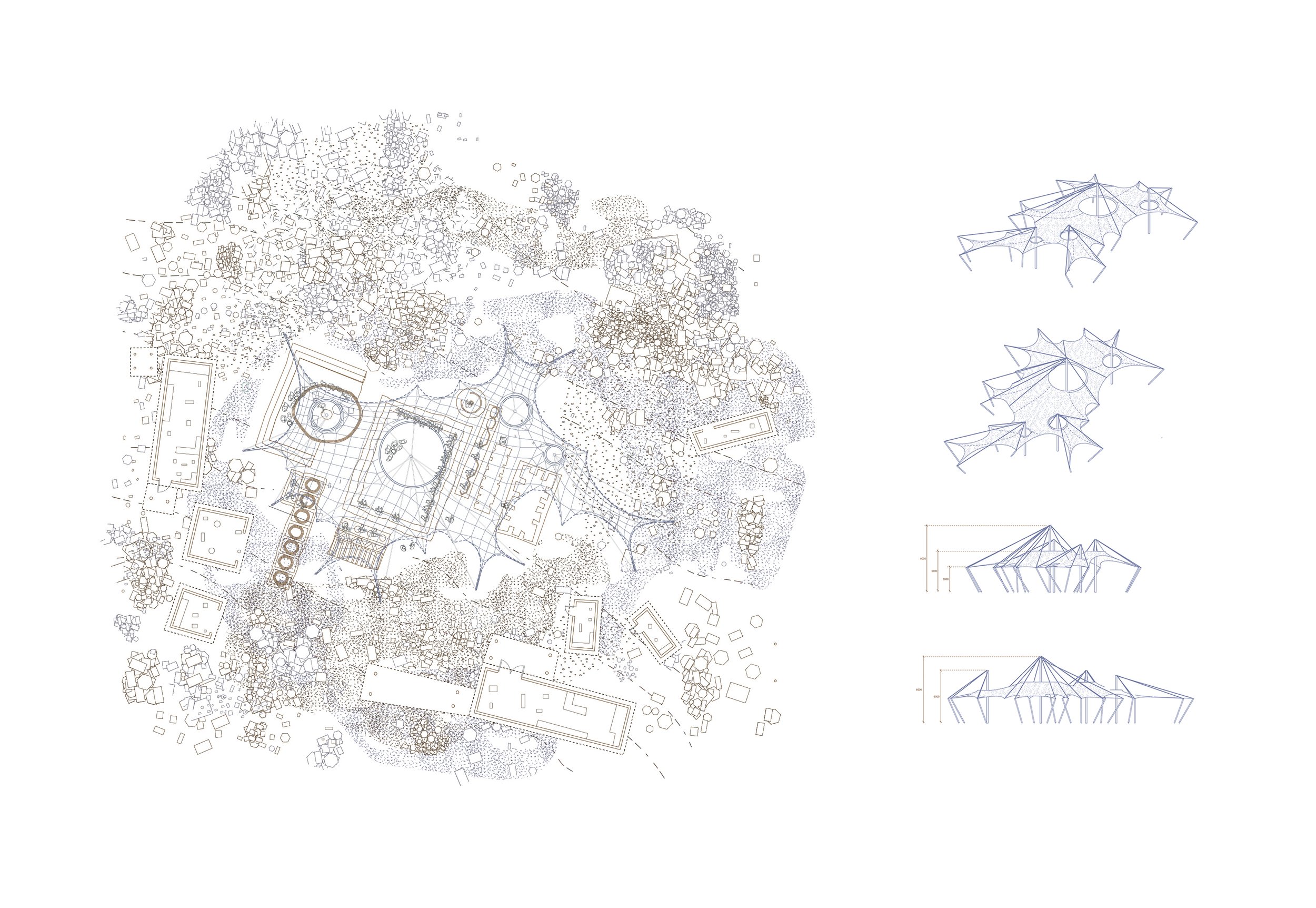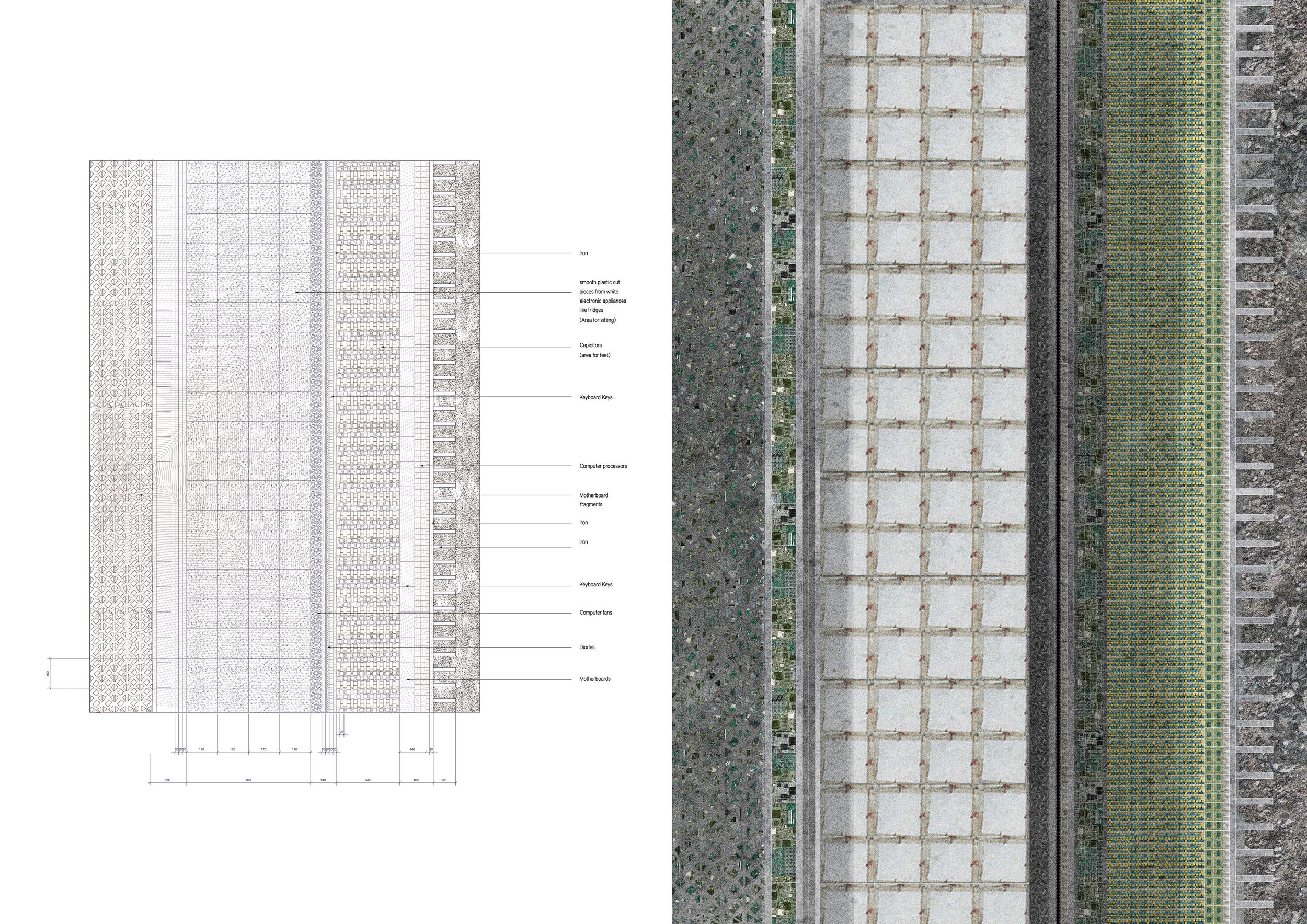Plinths and Tapestry
Plinths and Tapestry proposes five spaces to the southeast of Agbogbloshie, Ghana. Comprising 14 plinths and three canopies made from electronic waste, these interventions challenge the stigmas attached to materials and create new spatial opportunities for the local community. Ranging from 5-60 sqm, these plinths frame and elevate simple acts of daily life, respite, and togetherness. The three canopies employ various retired components to form a series of electronic tapestries. Spanning 20-40 metres these three structures are held 3-5 metres above the plinths by Asante umbrella-like systems.

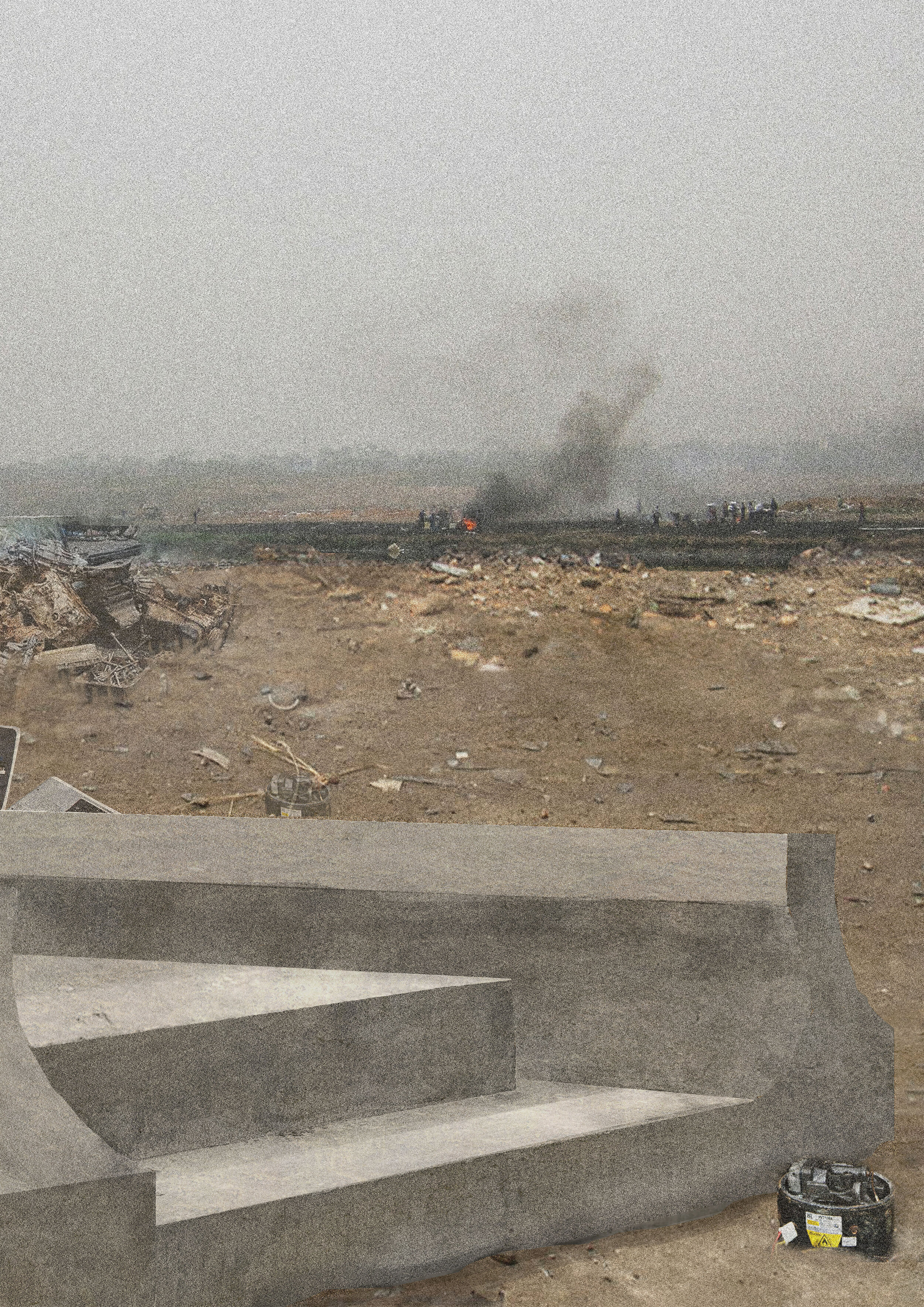
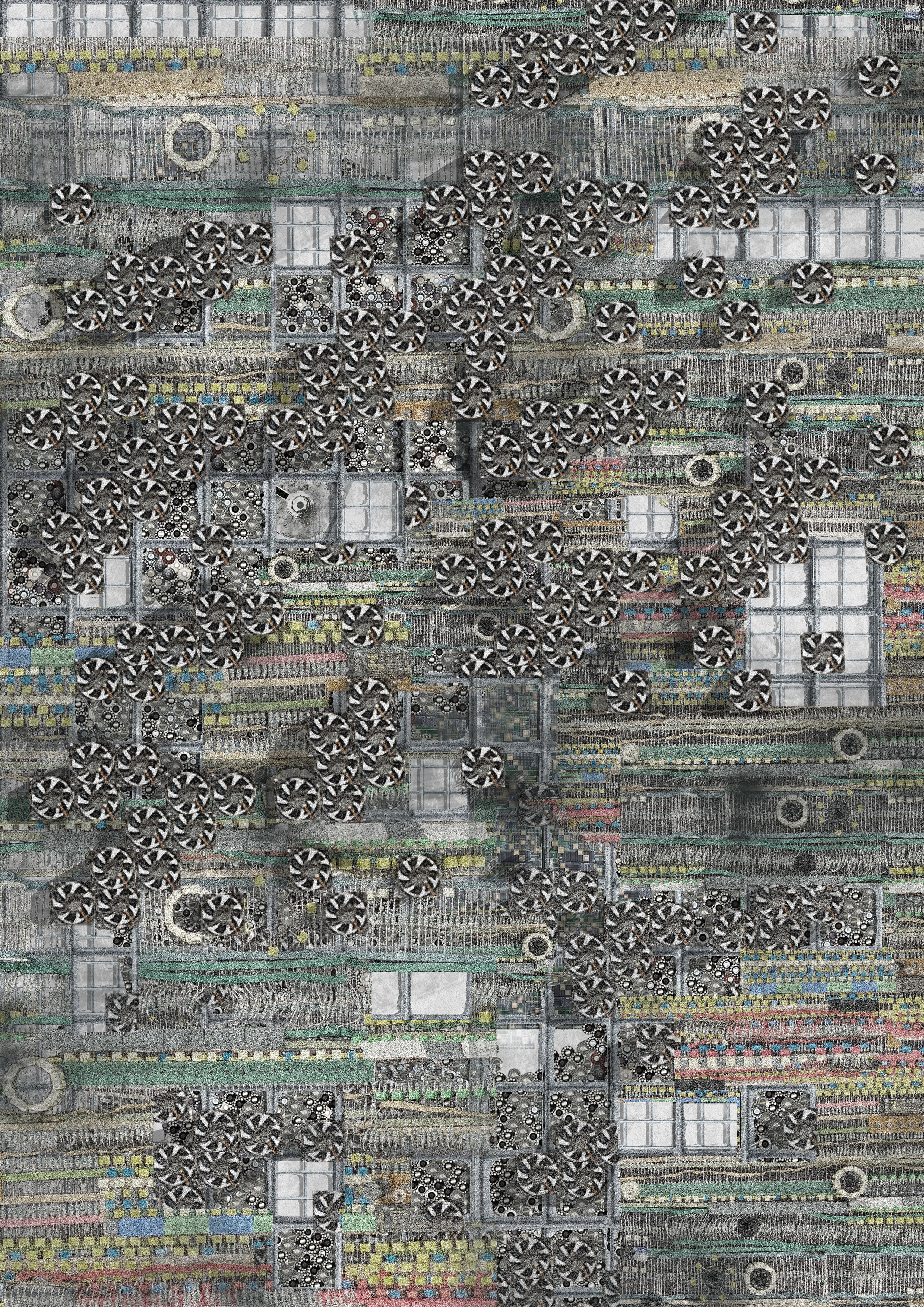

The proposed platforms and sheltering canopies meticulously define a set of ground conditions and material tectonic. By manipulating the existing ground condition these architectural pieces cut through the landscape to create areas for ceremonial rituals, religious practices, and everyday activities. Plinths are not only a way to simply raise people off of the ground but are an architectural form that redefines and renegotiate how the ground is made inhabitable. This is a project where experiencing areas of raw uncontaminated earth or the touch of your bare body on the intricacies and smoothness of cast electronic components becomes an enormous act of generosity and care.

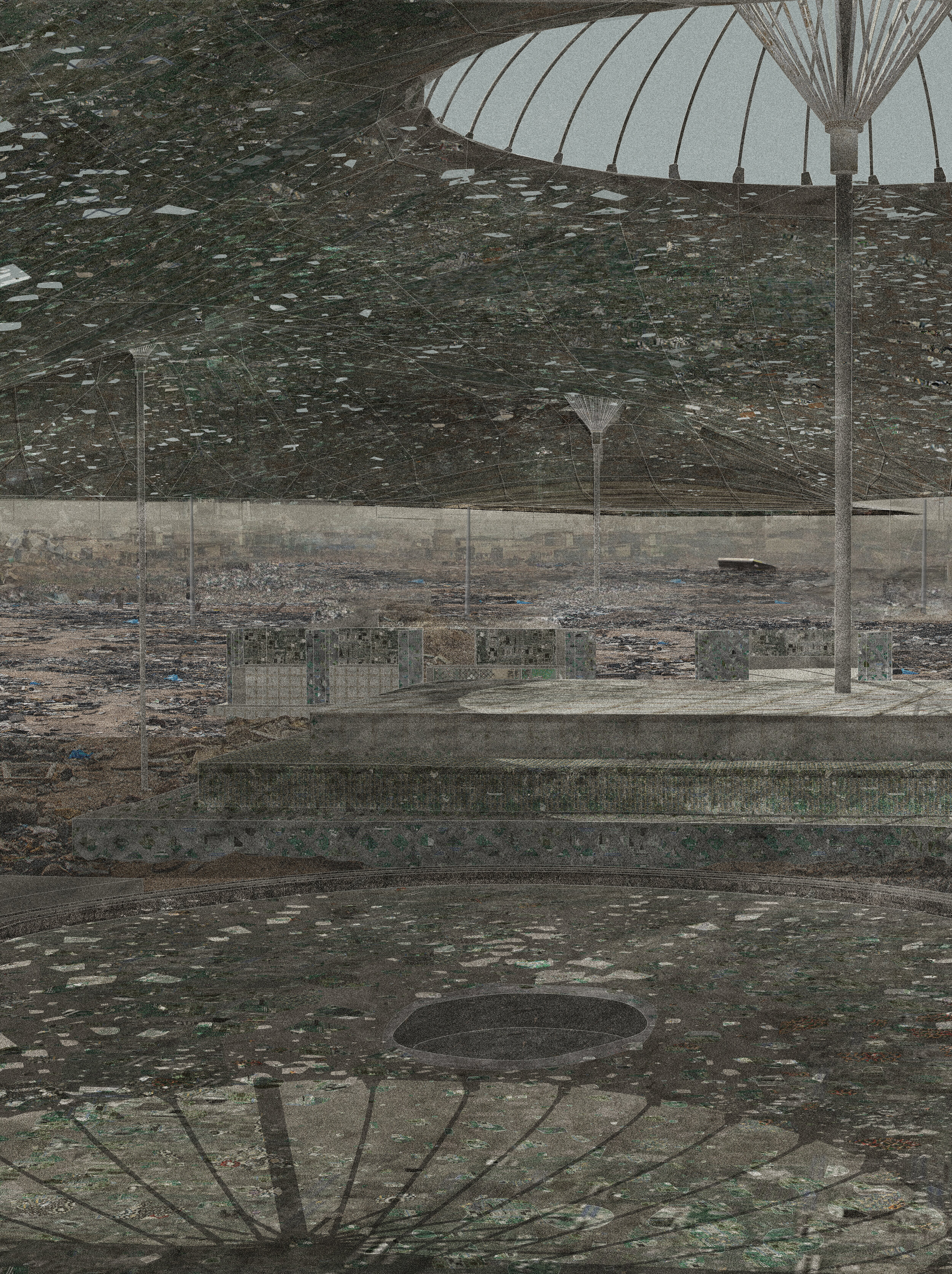
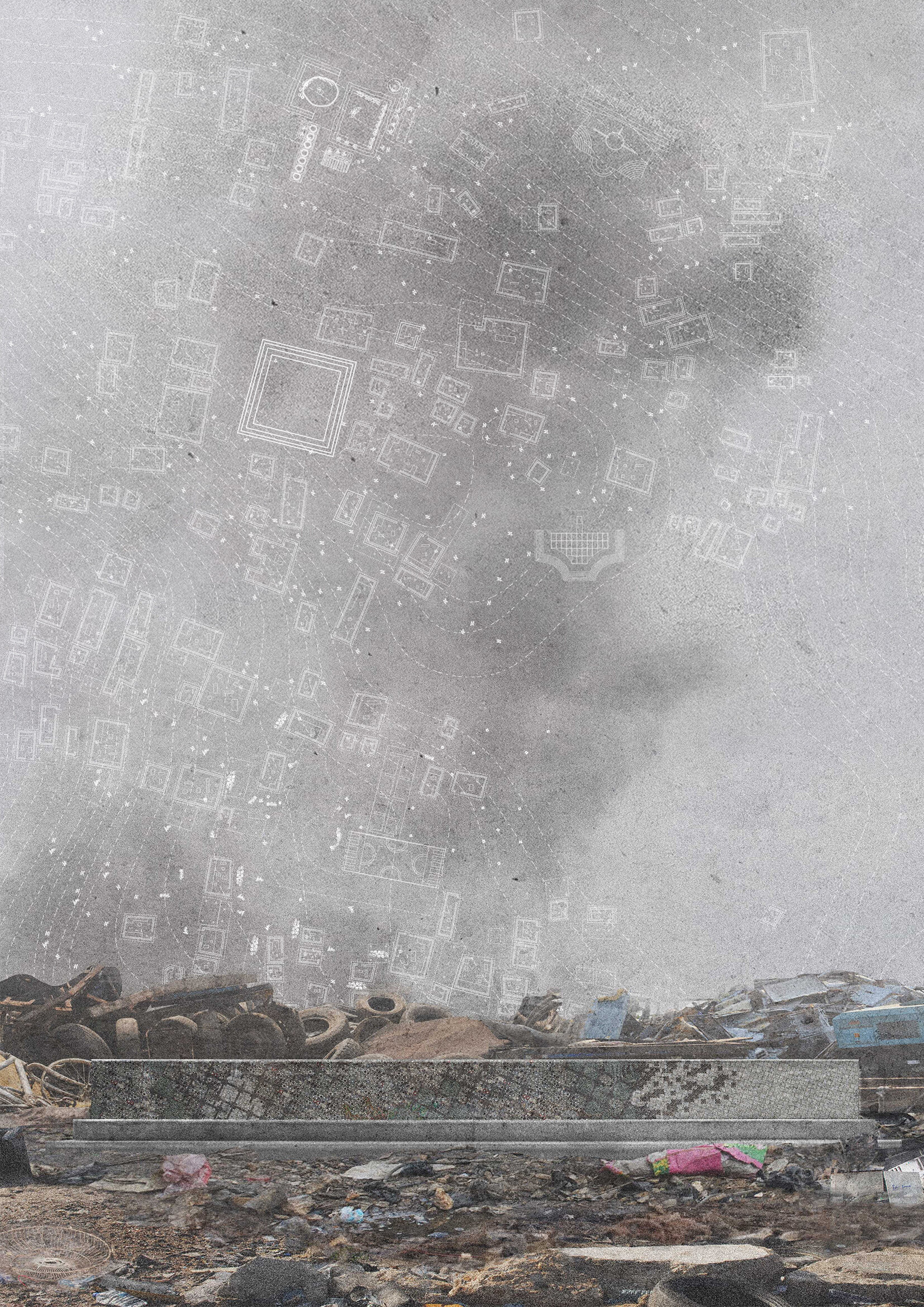


Plinths and Tapestry employs a unique formal, spatial, and material language that draws, on the one hand, from its etymological roots in Ghanaian culture (e.g. Ashanti gold weights and umbrellas); and on the other hand, from the global and highly personal remnants of electronic waste. It is a design investigation that places itself outside of the main canon of architecture.
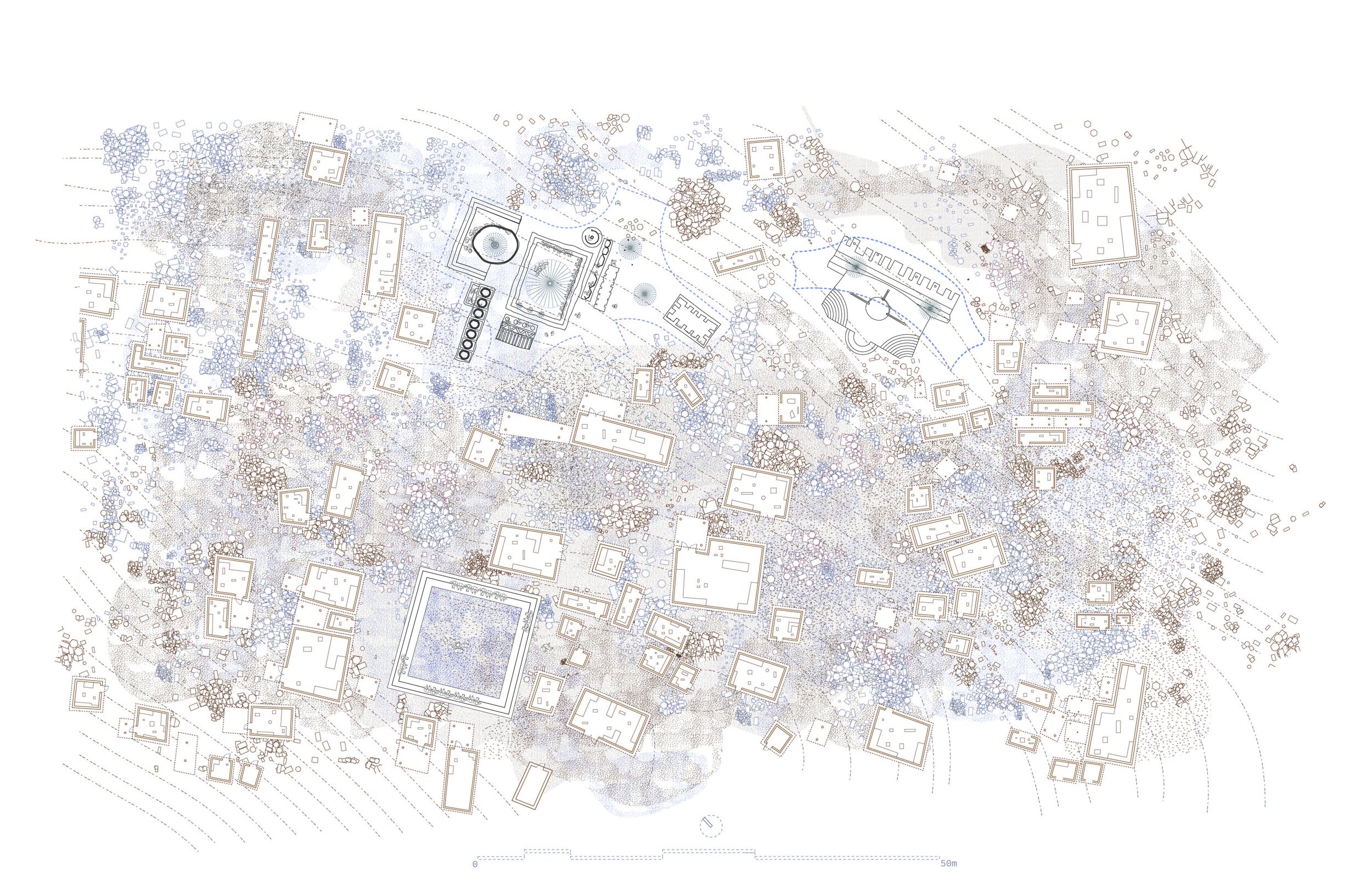
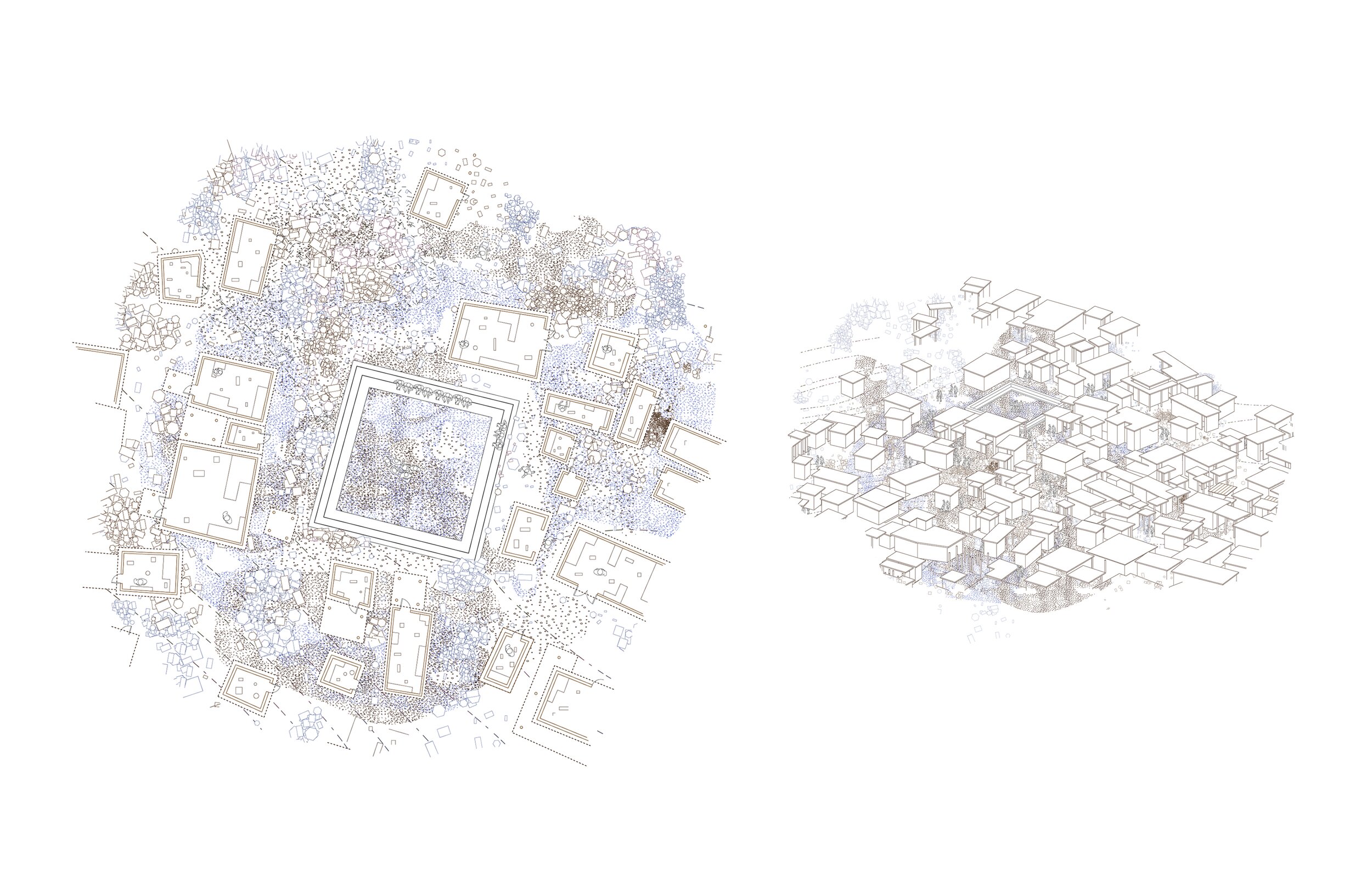

Plinths and Tapestry asks how by reconsidering the worth of materials, can practices, rituals, and everyday activities be spatialised? In the project, the role of the architect is as a listener and learner that advises on loose systems of construction which can be adapted by the residents. It is this process of engagement that allows for new values to be formed. Ultimately, at the project's heart sits the ambition to reinstall how materials are perceived and to provide spaces for new values to emerge.

